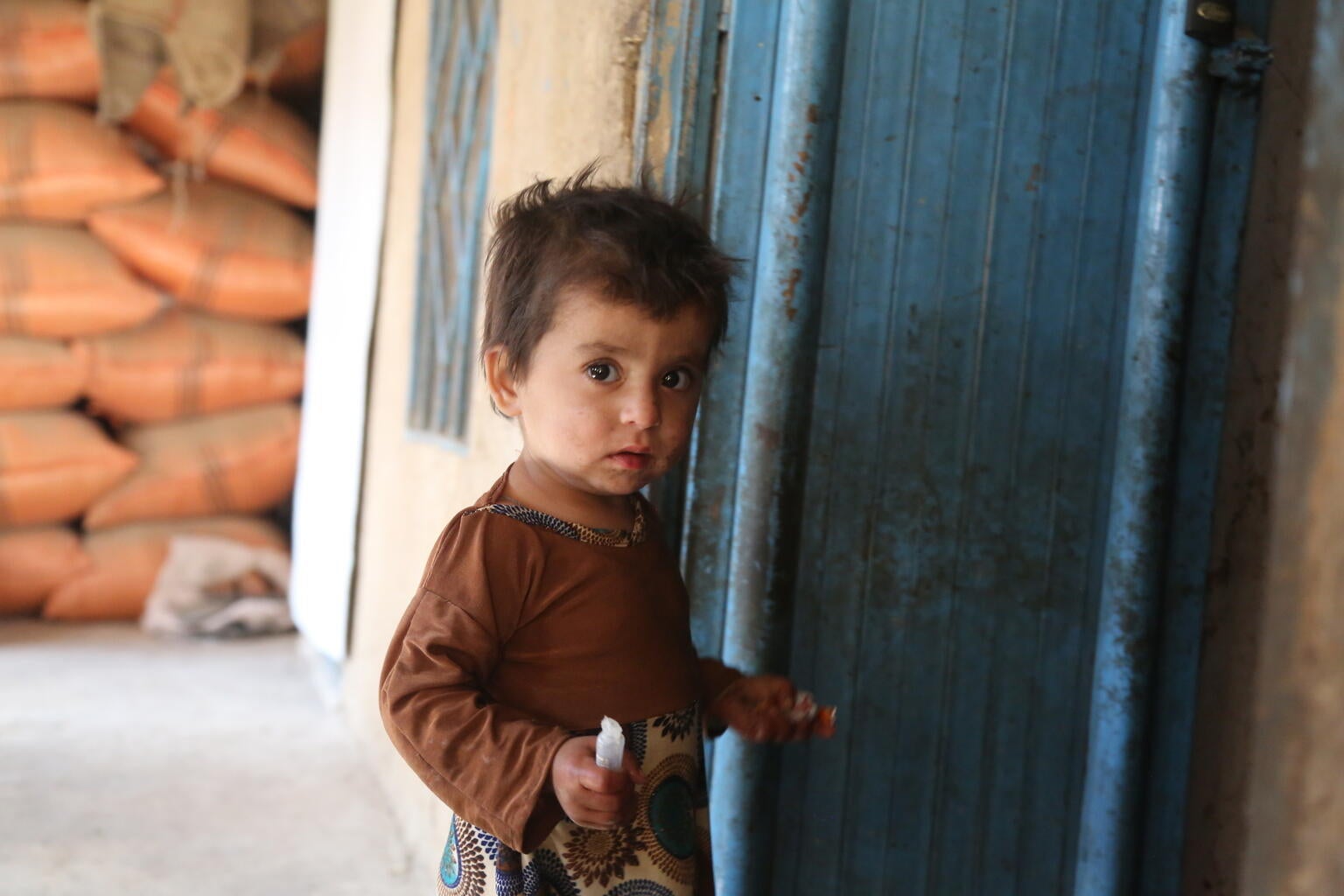Afghanistan is one of the most challenging places in the world to be a child. Ongoing conflict, extreme climate shocks, severe economic decline, and disease outbreaks are making life for children even harder.
Afghanistan's children face an uncertain future in a constantly changing and volatile situation. At least 12.6 million children need humanitarian assistance as families suffer extreme poverty in Afghanistan with limited access to healthcare, education, food and safe, clean water.
Girls are enduring a systematic crisis as women’s rights in Afghanistan are not being recognised. Their exclusion from secondary education and the workforce – and the imposition of rules governing their daily lives – has significantly increased their protection risks, devastated their rights to an education, and restricted their access to healthcare. The impacts will be felt for generations to come.
UNICEF has stood by the women and children of Afghanistan for more than 70 years throughout multiple crises, and as a humanitarian organisation, we will stay and deliver. We will engage, advocate and look for every opportunity to reach women and children who need us, no matter what.
Philanthropy: Afghanistan Crisis
UNICEF is on the ground in Afghanistan supporting vulnerable children and their families, we can't do this without you.

How is UNICEF helping children in Afghanistan?
UNICEF is working with local partners to provide children in need with access to healthcare, lifesaving vaccines and nutrition, child protection and clean water and sanitation. We’re advocating for girls’ education, while finding alternative pathways to learning to increase education opportunities for the hardest-to-reach children. And when emergency strikes, we’re on the ground, helping to keep children safe from harm.
How will my donation help children?
Even in the face of the escalating crisis, UNICEF's work for children and families across every region of the country continues.
- $10,000 could provide 88 family hygiene and dignity kits, designed for early response to prevent disease in emergencies.
- $15,000 could provide 17 health kits, containing essential medical supplies and equipment to benefit 17,000 children.
- $20,000 could provide 52 school-in-a-box kits, enough for over 2,000 children to continue their learning.

- 80¢on average, 80 cents to every dollar spent for the past three years went directly to helping children in need, including long-term programs, emergency response and community education.
- 20¢on average, 14 cents to every dollar spent for the past three years went to essential fundraising costs that helped us generate more impact for children, 6 cents went to admin costs, such as keeping your personal data safe.
How do we use each dollar donated?
In the unlikely event that UNICEF receives more funds than needed for this emergency response, your gift will help support UNICEF's work for children in need around the world.
You can find out more about our financial results and breakdown in our 2022 Annual Report.
Top image: In May 2024, 11-year-old Hajera survived a flash flood in northeastern Afghanistan which destroyed her family’s home. “The flood took everything we had, including my books and notebooks and I cannot go to school without them," says Hajera. Photo credit: © UNICEF/UNI576410/Meerzad




